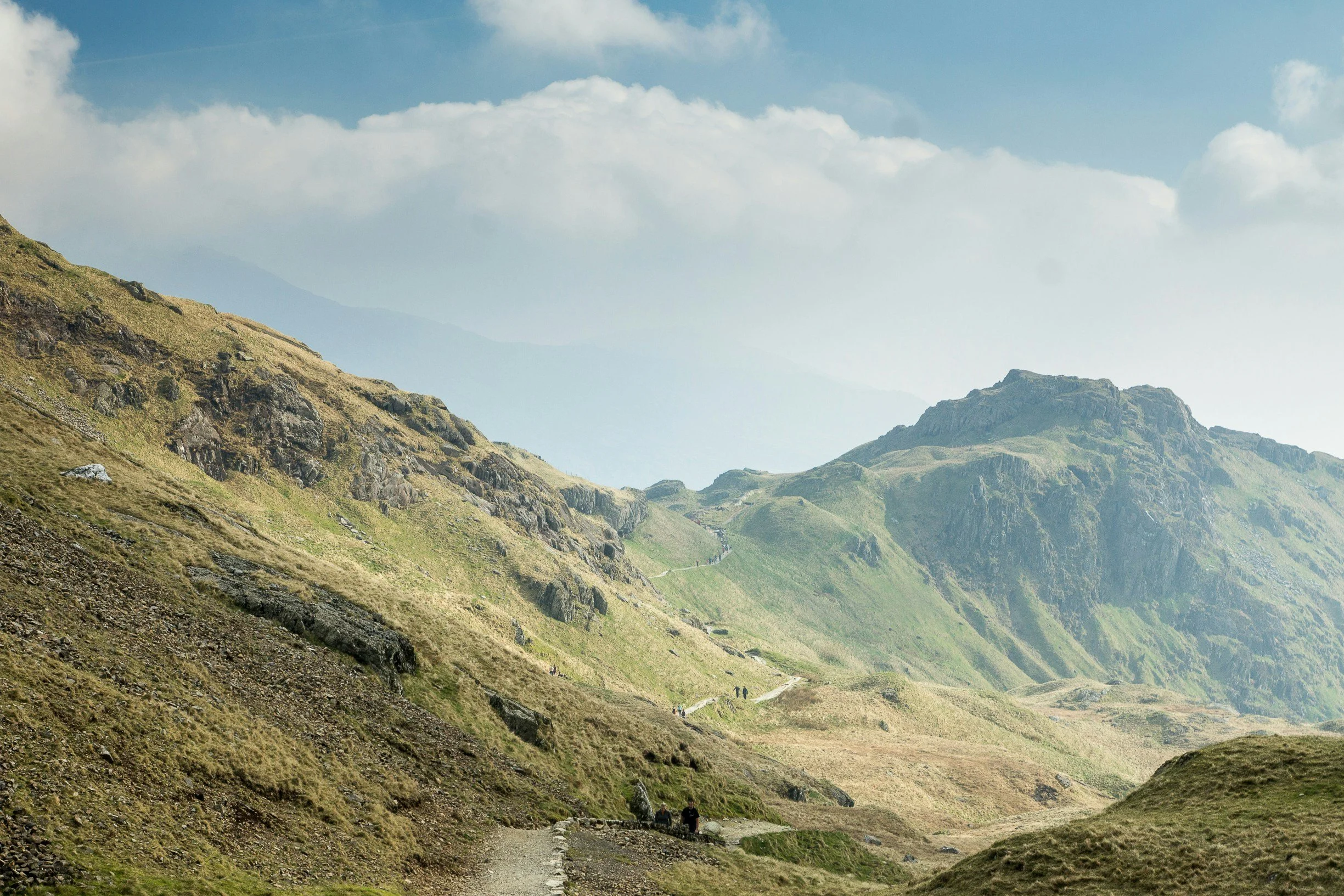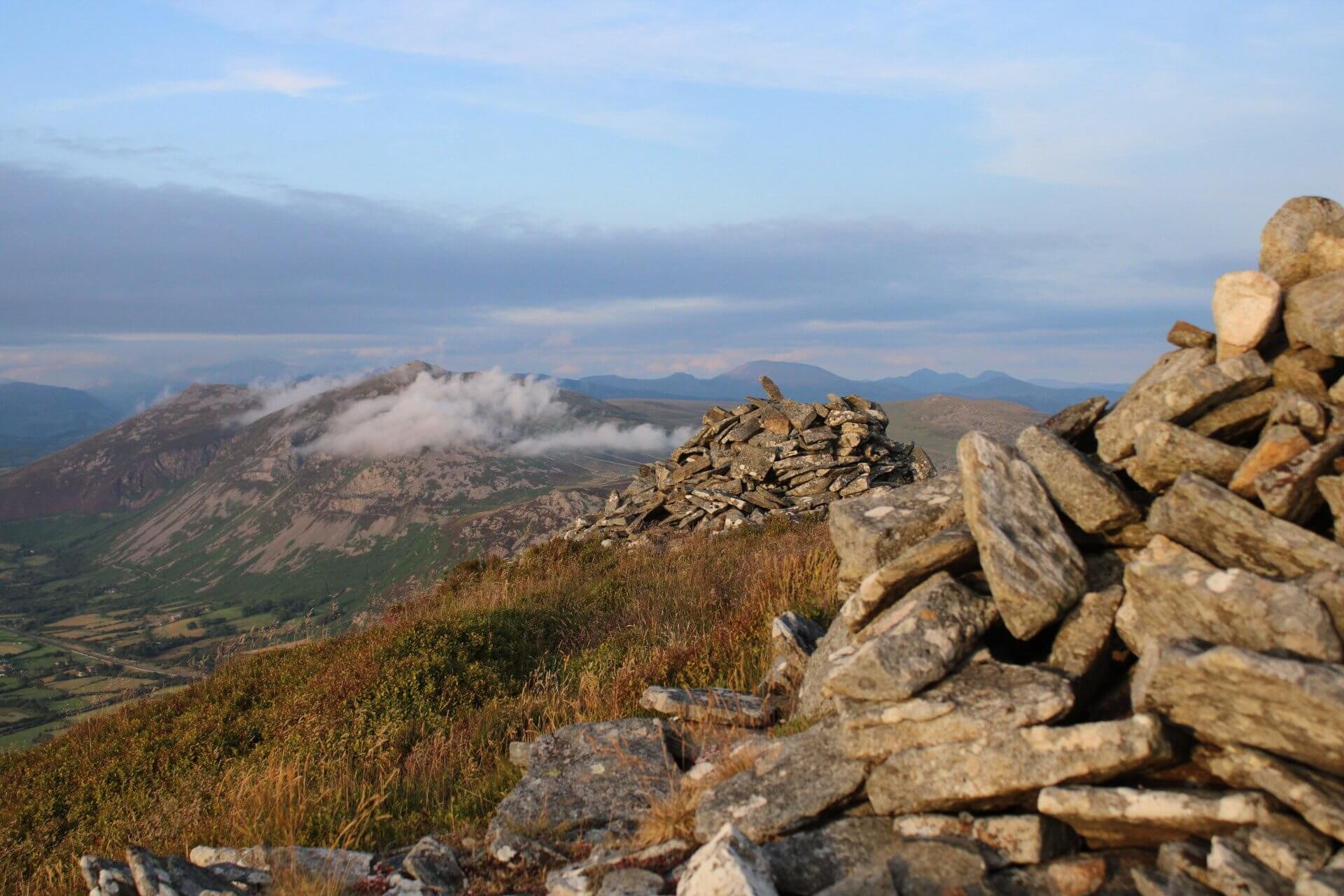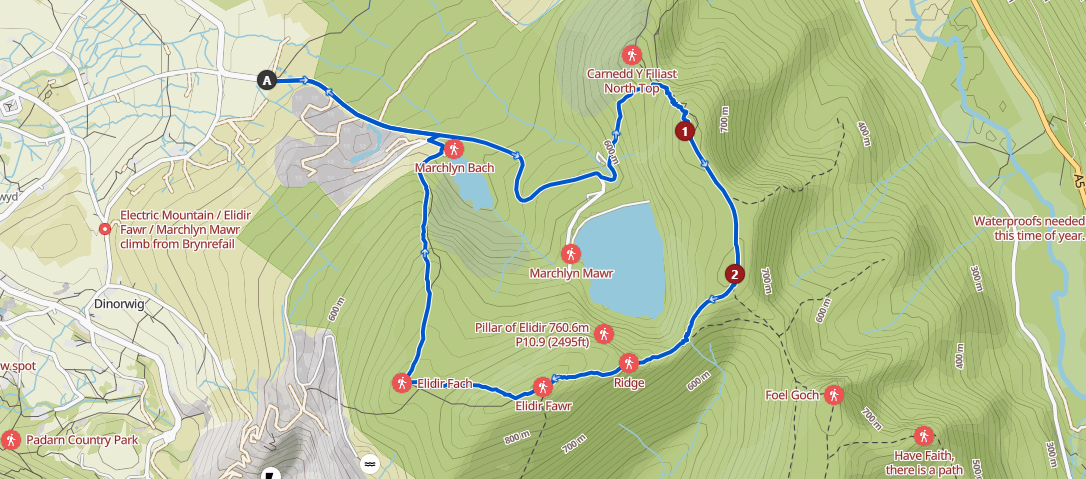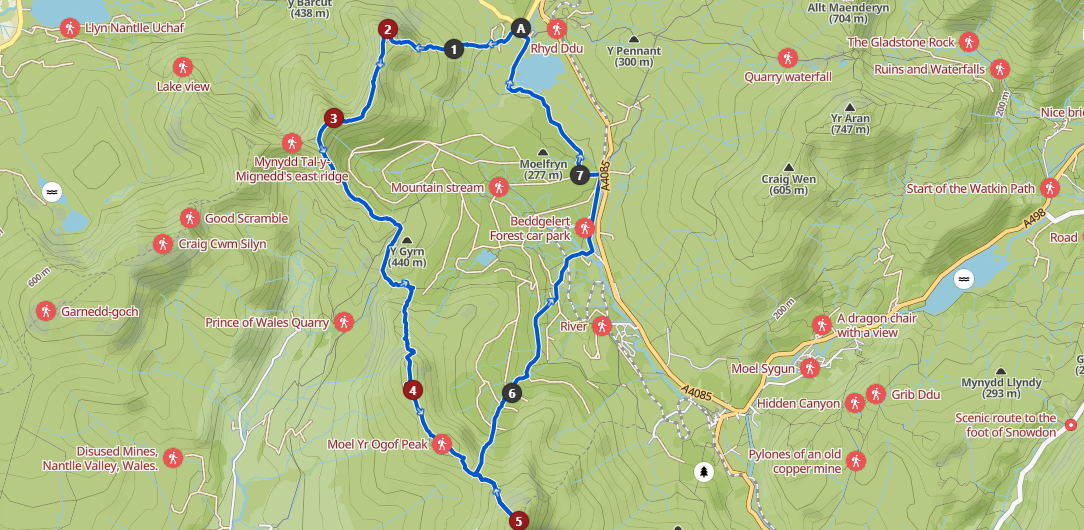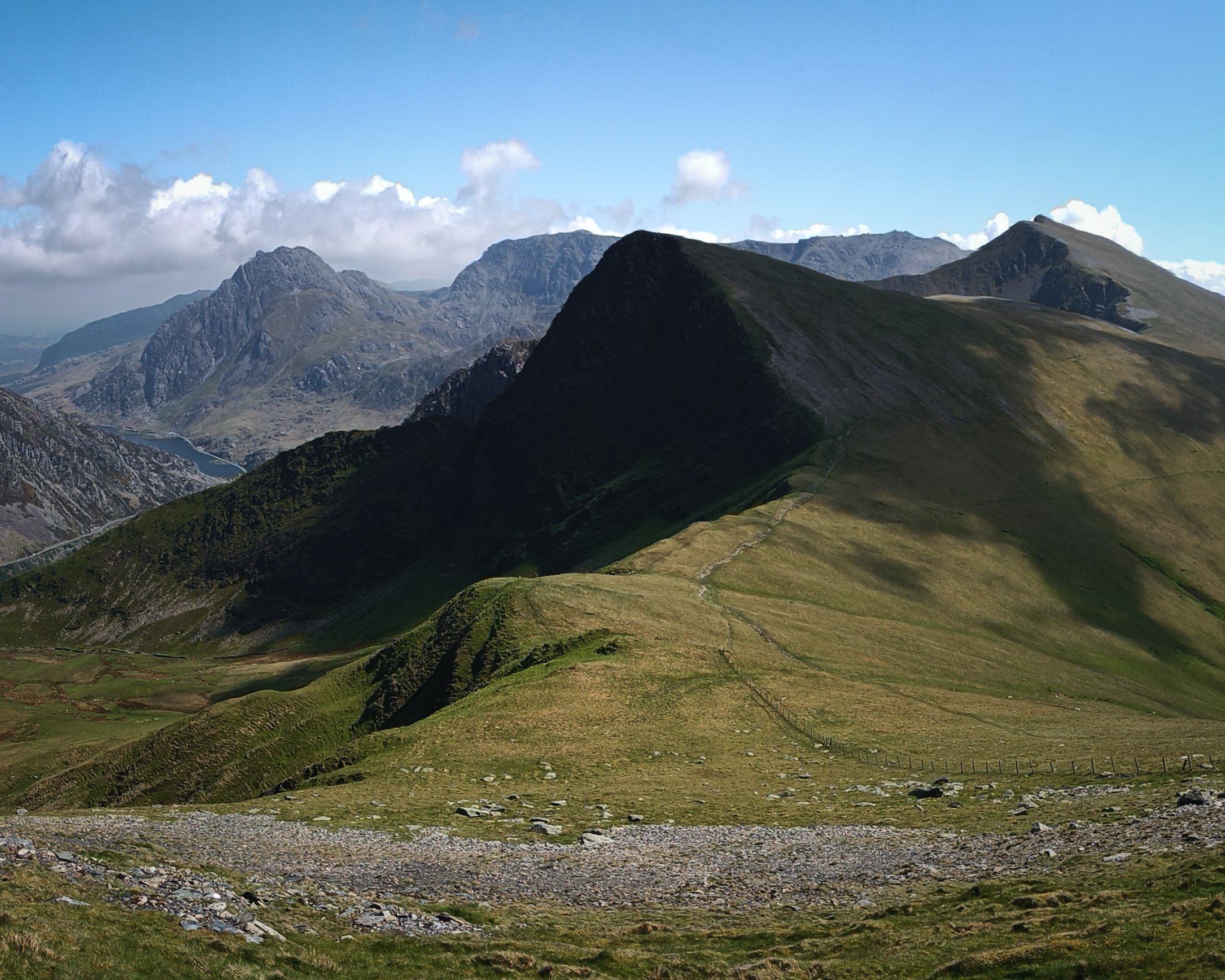
GO ERYRI - MOUNTAIN BLOG
Sharing our thoughts on UK climbing and mountaineering news - the successes and challenges we see in Eryri National Park and explore the ever difficult balance between adventure and conservation in our UK wild spaces.
Essential First Aid Tips for the Mountains (Event Medics North Wales)
In this blog, we’ll cover essential first aid tips for mountain environments and highlight the importance of having event medical cover in place for your event, no matter the size or location.
Go Eryri - Event Medics & Mountain Medics
Mountain environments in North Wales are stunning, from the rugged peaks of Snowdonia to the remote forest trails of Coed Y Brenin, but they come with inherent risks. Whether you're taking part in a mountain race, enjoying a hike, or attending an outdoor event, understanding basic first aid can make all the difference in managing injuries until professional help arrives. That’s why having qualified event medics in North Wales on-site is crucial for ensuring safety at your event.
In this blog, we’ll cover essential first aid tips for mountain environments and highlight the importance of having event medical cover in place for your event, no matter the size or location.
1. Injury Prevention: Understanding Risks and Preparedness
In the mountains, accidents often happen when least expected. Slips, trips, and falls are among the most common causes of injury in mountain environments, and can lead to sprains, fractures, or even head injuries.
Statistics to note:
Sprains and fractures are the leading cause of injuries in mountain sports and outdoor activities.
Trauma-related injuries including sprains and fractures are the leading cause of emergency evacuations from mountain events.
To reduce the risk of injury:
Wear appropriate footwear with good ankle support and grip.
Pack and carry essential items such as a first aid kit, water, and layered clothing.
Always be aware of weather conditions, as mountain weather can change rapidly, increasing the risk of slips and falls on wet or icy surfaces.
Having event medics at your event ensures that in case of an injury, professional help is on hand to provide immediate care, reducing the severity of the injury.
2. How to Handle Sprains and Strains in the Mountains
Ankle sprains account for about 30-40% of all accidents in mountain sports and activities.
In remote areas, sprains and strains are common, especially for those participating in outdoor sports or events like mountain biking or trail running. Strains happen when muscles are overstretched, while sprains occur when ligaments are torn or stretched.
Signs of a sprain or strain include:
Swelling and bruising
Difficulty moving the affected area
Pain and tenderness
To treat a sprain or strain:
Rest the injured limb—do not attempt to walk or continue activity on it.
Ice the injury for 15-20 minutes every hour to reduce swelling.
Compression can help reduce swelling, but avoid wrapping it too tightly.
Elevation of the injured limb to help prevent further swelling.
In the case of more severe sprains or fractures, event medics in North Wales are equipped with immobilisation tools like splints and stretchers. They can provide fast treatment and determine if further medical attention is necessary.
3. Dehydration and Heat-Related Illnesses in Mountain Environments
Even Snowdonia gets hot!.. (sometimes.. honest..)
Even in cooler mountain climates, dehydration and heat exhaustion are significant risks during events or long hikes. The symptoms of dehydration range from mild (dry mouth, dizziness) to severe (confusion, fatigue). Heat exhaustion can quickly turn into heat stroke if not addressed promptly.
Important facts:
Heat stroke can be fatal if untreated, and it typically affects athletes in intense physical activity during hot weather.
Mountain athletes should drink about 500 ml of fluid every hour, more in hotter conditions.
How to treat dehydration or heat exhaustion:
Hydration is the first priority. Encourage fluid intake, especially electrolytes (sports drinks).
Rest in a cool, shaded area and remove excess clothing.
Cool the person down with a damp cloth or by spraying them with water.
Monitor vital signs like pulse and breathing, and seek medical attention if symptoms persist.
Having event medics on-site means immediate treatment for dehydration, which could escalate into heat stroke without proper care.
4. Hypothermia: A Hidden Danger in the Mountains
The lowest recorded temperature at the summit of Snowdon (Yr Wyddfa) was -23.3°C, which occurred in January 1963…
In North Wales, unpredictable weather can quickly turn from sunny to cold and wet, putting event-goers at risk for hypothermia. This condition occurs when the body temperature drops below 35°C and can be life-threatening if not treated promptly.
Signs of hypothermia include:
Shivering and shaking
Confusion or slurred speech
Loss of coordination or muscle stiffness
First aid for hypothermia:
Move the person to a warmer environment, away from wind and moisture.
Remove wet clothing and replace it with dry, warm layers.
Provide warm drinks (non-alcoholic) if the person is alert.
Never warm the person too quickly (e.g., with hot water), as this could cause shock.
In extreme conditions, hypothermia requires immediate medical attention, and this is where event medics in North Wales can truly make a difference, providing advanced care and facilitating a fast evacuation if necessary.
5. Cuts, Scrapes, and Blisters in the Mountains
“I went to conquer the mountain… but my blisters beat me to it…”
Accidents happen—whether from sharp rocks, branches, or simple friction on long trails. Cuts, scrapes, and blisters are common, especially during outdoor events or hiking in rugged terrain.
First aid for minor cuts and scrapes:
Clean the wound with clean water and apply a sterile dressing.
For deeper cuts, apply pressure to stop bleeding and use a clean cloth or bandage.
Blisters should be covered with blister-specific bandages to reduce irritation and prevent infection.
For more severe wounds, event medics in North Wales have access to medical-grade equipment to clean and dress wounds.
Why You Need Event Medics North Wales for Your Mountain Event…
Event medical cover isn’t just a “nice-to-have”; it’s a critical part of managing any outdoor event in the mountains. With rough terrain, unpredictable weather, and high levels of physical exertion, medical emergencies can happen at any time.
By having event medics in North Wales on-site, you ensure:
Immediate, professional care for participants and attendees
Advanced medical equipment that goes beyond basic first aid kits
Fast response times, especially in remote areas with limited access to medical facilities
Safety and compliance with health and safety regulations, keeping your event smooth and legally sound
For events of all sizes, from hiking races to music festivals in the mountains, partnering with Go-Eryri ensures that your event is safe and well-prepared for any medical emergency.
Care for nature and care for self when up on the mountains…
Conclusion: Stay Safe, Be Prepared
Whether you're hiking through the mountains of North Wales or managing a large outdoor event, it's essential to have a solid first aid plan in place. While knowing basic first aid is valuable, having qualified event medics ready to respond ensures everyone’s safety and provides peace of mind.
Don’t wait until it’s too late—ensure your event is covered by trained event medics in North Wales.
Contact us to discuss how we can provide the right medical support for your event today!
Escape the Crowds: 5 Lesser-Known Hikes in Eryri (Snowdonia)
Tired of packed parking and crowded summits? This guide reveals 5 of Snowdonia’s best hikes that offer all the beauty without the buzz. Whether you're after quiet forests, secret waterfalls, or wide-open views, these under-the-radar hikes are your ticket to solitude in the wild.
Company’s great… most of the time. But if you're craving solitude, here are five of the best quiet hikes in Snowdonia.
Tired of packed parking and crowded summits? This guide reveals 5 of Snowdonia’s best hikes that offer all the beauty without the buzz. Whether you're after quiet forests, secret waterfalls, or wide-open views, these under-the-radar hikes are your ticket to solitude in the wild.
Mynydd Mawr (From Rhyd Ddu)
Distance: 4.6km (2.9 miles)
Ascent: 503m (1,650 feet)
Mynydd Mawr (698 meters, 2,290 feet) —often called “Elephant Mountain” thanks to its distinctive shape—may look imposing from a distance, but the hike is surprisingly approachable. Aside from a few steep walking sections, it’s a rewarding and manageable climb with panoramic views over Nantlle, Yr Wyddfa (Snowdon), Yr Eifl, and the Irish Sea. Especially enjoyable on a warm summer afternoon.
The route starts just above the village of Rhyd Ddu, following a forest track that winds above Llyn Cwellyn for about a mile and a half. After this, the trail climbs through the trees to meet the main path ascending the mountain’s western flank. From here, the views open up—especially across the dramatic Nantlle Ridge. While the trail does get steep in places, the tough sections don’t last long. You'll soon reach a broad plateau with impressive views down Craig y Bera and across the Nantlle Valley. One final push takes you to the summit cairn, where you’re rewarded with sweeping views over the Irish Sea and Anglesey.
Moel Eilio (From Cefn Du)
Distance: 8.3km (5.2 miles)
Ascent: 457m (1,500 feet)
Moel Eilio (726 meters, 2,382 feet), meaning "Eilio's Hill" in English, derives its name from the Welsh word "Moel," which translates to "hill" or "mountain." The "Eilio" part is believed to be a personal name, though there’s no clear historical figure tied to this smooth, rounded summit.
The hike begins at the old quarry workings of Cefn Du, where the trail gradually ascends Moel Eilio’s western side. While the path is fairly steep, the terrain is easy to navigate, requiring a steady climb of 457 meters to the summit. Once you reach the top, you’ll be rewarded with stunning panoramic views, including vistas of Llanberis, the Elidirs, and Wyddfa (Snowdon), along with sights of Anglesey and Llandudno in the distance. You can either backtrack to the beginning for a shorter walk or loop down the south flank bringing you conveniently back to your starting point at Cefn Du.
Elidir Horseshoe (Marchlyn Loop)
Distance: 9.7km (6 miles)
Ascent: 616m (2,025 feet)
The Elidir Range marks the northernmost part of the Glyderau Mountains and is named after the legendary 6th-century warrior king, Eliffer Gosgorddfawr (also known as Elidir of the Great Army). Nestled behind Elidir Fawr, you wont miss the Marchlyn Mawr Reservoir which serves as the primary water source for the Dinorwig Power Station.
The hike begins at the base of Marchlyn Mawr above Deniolen / Dinorwig, where you'll follow a private (open access) winding tarmac road that gradually ascends. Along the way, you'll reach the path leading up to Carnedd Y Filiast (821m, 2,694ft), offering panoramic views over the Atlantic Slabs, Anglesey, and the Bay of Llandudno. From there, the trail takes you to the summit of Mynydd Perfedd (813m, 2,667ft), providing breathtaking vistas of the Ogwen Valley. The next stop is Elidir Fawr (924m, 3,031ft) rewarding hikers with impressive views of the Wyddfa (Snowdon) range. As you descend, you'll pass Elidir Fach (795m, 2,608ft), with a final look over the Slate Mines before completing the loop back to the starting point.
Moel Siabod (Daear Ddu Ridge)
Distance: 9.5km (5.9 miles)
Ascent: 686m (2,250 feet)
Moel Siabod (872m, 2,861 ft) stands proudly above the small village of Dolwyddelan and is the highest peak in the Moelwynion mountain range. On a clear day, it's said that you can spot 13 of the 14 highest peaks in Wales from its summit without even turning your head.
The hike starts at Pont Cyfyng, just a short distance from Capel Curig, which could also serve as an alternative parking and starting point. The path gently ascends towards the old quarry workings and picturesque quarry lakes. As you continue upward, you'll reach a large, quiet Cwm (valley) before passing the charming, small lake of Llyn y Foel. From here, the path steepens toward the scramble of Dear Ddu Ridge. It’s graded as a grade 1 scramble on some sections but most hikers should find it manageable enough, though you’ll likely need to use your hands in certain parts. Once at the top of Moel Siabod, the views over the Snowdonia range are absolutely stunning. The loop continues around, and you’ll descend the northeastern ridge, eventually making your way back down to Pont Cyfyng.
Nantlle Ridge to Moel Hebog (Coed Beddgelert Loop)
Distance: 17.8km (11 miles)
Ascent: 1,200m (3,937 feet)
If you're after a full-day leg-stretcher with unforgettable views, this hike starts along the Nantlle Ridge before crossing Cwm y Ddwy Elor and heading into the Hebog range, covering Moel Lefn, Moel Yr Ogof, and Moel Hebog. Expect incredible panoramas across the Nantlle Valley, stretching out to Anglesey, and stunning sights across the Rhyd Ddu Valley toward Yr Wyddfa.
The route begins in Rhyd Ddu, following the same start as the classic Nantlle Ridge walk. After a steep climb up Y Garn, there's a chance to catch your breath before the hands-on scramble across Mynydd Drws y Coed. Once you’ve topped out on Trum y Ddysgl, the trail drops into the broad, scenic expanse of Cwm y Ddwy Elor with plenty of quarry workings to explore. From here, you can either turn back through Beddgelert Forest or continue on into the Hebog range proper. The next summit is Moel Lefn, offering wonderful views over Porthmadog and Anglesey. From there, you head to Moel Yr Ogof, famous for being one of Owain Glyndŵr’s caves, Ogof Owain Glyndŵr, which is tucked away on the steep southern flank of the mountain, the authenticity of the location can’t be proven though he was well known as having various advantageous guerilla positions in the Eryri hills looking out across the Irish Sea and the Menai straits.
At the col (bwlch) before Moel Hebog, you have another chance to descend early via the forest. But if you’ve still got the energy in the legs, it’s highly recommended to push on to the summit of Moel Hebog (783m, 2,568ft), where the views across Eryri are well worth the effort. From there, the route backtracks to the bwlch and descends into the majestic Beddgelert Forest, passing the peaceful lakes of Llyn Llywelyn and Llyn y Gadair before looping back to the starting point.
2025: Another Landmark Year for UK Climbing and Mountaineering Amid Rising Conservation Concerns
Whether on indoor walls or remote mountain ridges, 2025 has been a defining year for UK climbing and mountaineering. From record-breaking competition wins to a new wave of leadership and inclusivity, the outdoor community is thriving, driven by passion, progress, and a renewed sense of purpose. Yet alongside this momentum lies a growing tension. As participation rises and footfall increases across our wild spaces, the environmental cost is becoming harder to overlook. Path erosion, habitat disturbance, and the strain on delicate ecosystems remind us that with greater access comes greater responsibility.
As we reach the midpoint of 2025, the UK outdoor community finds itself at a crossroads, leading the way in global climbing achievements while also grappling with growing concerns over environmental impact and conservation. Here’s a look at how the British mountain and climbing world is balancing progress and preservation.
Competition Brilliance: A New Era in British Climbing
Another landmark year for british climbing, with dominant performances and exciting new talent emerging across all categories.
This year’s indoor competition scene has been dominated by the rising star Erin McNeice, who made history by winning both the British Bouldering and Lead Climbing Championships—a rare and remarkable feat. Her flawless finals performance and subsequent bronze medal at the Bouldering World Cup in Keqiao, China, have positioned her as one of the UK’s most promising climbers on the world stage.
On the men’s side, Jack MacDougall clinched his second national bouldering title, continuing his strong overall placements in competitive climbing.
Meanwhile, the next generation of British climbers are stepping up and chalking up. Iggy Rinaldi and Spike Fullwood won their under-17 categories, showcasing the UK’s depth of youth talent in the sport, are these the names we’ll be seeing on our screens in the 2028 LA Olympics?
Inclusive Progress: Investing in the Future
Inclusivity and accessibility have taken center stage in 2025. The BMC introduced the new GB Paraclimbing Team, with 36 athletes across nine classifications, aiming for a strong showing at the LA 2028 Paralympics. This initiative is part of a broader movement to ensure equal opportunities in climbing.
UK Sport’s £2.775 million investment into climbing and paraclimbing is set to elevate performance standards nationwide, providing athletes with the support and resources needed to thrive. Adaptive climbing programs and customized routes are rapidly expanding, ensuring that climbing is accessible to everyone, regardless of physical ability.
Environmental Action: Leading from the Crag
Rising visitor numbers are putting increased pressure on the mountains and those who guide them—how should we respond?
The British Mountaineering Council (BMC) has launched a bold Climate and Sustainability Action Plan, addressing the sport’s environmental impact head-on. With goals around reducing carbon emissions, restoring degraded landscapes, and promoting responsible mountain use, this initiative reflects a growing awareness of the need to protect the natural environments we explore.
Mountain guides, particularly those working in iconic areas like Snowdonia—which sits at the heart of the UK's outdoor adventures—are embracing these shifts, incorporating sustainable practices into their sessions. Whether it's reducing carbon footprints through more eco-friendly transport options or encouraging groups to follow Leave No Trace principles, mountain guides across the UK and more importantly in high impact areas such as Snowdonia need to evolve and prioritize conservation.
With Eryri National Park (Snowdonia) being a key hub for both mountaineers and walkers, guiding in this area is now more focused on environmental stewardship. Guides are being trained not just in technical skills but in ways to preserve the integrity of the land, ensuring that these magnificent mountains remain accessible for generations to come.
Raising the Bar in Mountain Leadership
For those looking to guide in the UK’s mountainous regions—whether leading a scrambling day in Snowdonia or running multi-pitch climbing skills in the Lake District—there are important updates from Mountain Training. As of January 2025, the syllabi for climbing instructor qualifications have been refreshed to place greater emphasis on leadership, judgment, and environmental awareness.
This is especially relevant for those looking to offer guided mountain experiences in Snowdonia, where demand for high-quality, safe, and environmentally conscious instruction continues to grow. Mountain Leaders are now required to demonstrate a deeper understanding of the natural environment, as well as the safety and well-being of participants.
If you're planning a guided adventure in the Snowdonia mountains, choosing an instructor who is up-to-date with these new qualifications can make all the difference in terms of experience, safety, and environmental responsibility.
Environmental Impact and Conservation Challenges in Eryri
Is Eryri thriving or just surviving the crowds? Can adventure and nature still walk the same path?
While 2025 has seen a surge in interest in outdoor adventure, it has also brought renewed focus to the environmental pressures facing Eryri National Park. As visitor numbers continue to climb—particularly on iconic routes like Snowdon’s Llanberis Path and the knife-edge Crib Goch—so too does the strain on fragile mountain ecosystems.
Erosion of footpaths, increased litter, and the disturbance of wildlife habitats are all growing concerns. Seasonal overcrowding has also led to traffic congestion and parking issues in local communities, prompting calls for more sustainable tourism management. While recent investments in public transport and education campaigns have helped, the scale of the challenge is significant.
The Eryri National Park Authority, alongside conservation groups, has been working to balance access and preservation. Initiatives like volunteer-led path maintenance, habitat restoration, and encouraging responsible behaviour through Leave No Trace messaging are steps in the right direction—but more comprehensive, long-term strategies are needed.
As more people are drawn to the beauty of Snowdonia, the question becomes not just how to welcome them—but how to ensure the mountains can thrive for generations to come.
Eryri National Park
In 2025, Eryri National Park (Snowdonia) continues to be a focal point for environmental, cultural, and adventure tourism developments. Efforts to manage overtourism include better visitor distribution, eco-friendly transport options, and improved waste management, ensuring that the park’s delicate ecosystems are protected. Conservation initiatives are ongoing to preserve rare species and restore habitats, while new safety measures and technology (mobile/cellular masts, path trackers etc..), are being introduced to ensure visitor well-being.
Local events and heritage projects are also spotlighting the rich Welsh culture, while funding is supporting infrastructure improvements and sustainable outdoor experiences. These initiatives, combined with a growing emphasis on sustainable tourism, aim to balance Snowdonia’s natural beauty with the increasing number of visitors each year.
Looking Ahead
A standout year for adventure—but are the wild places we love are feeling the weight of our footsteps?
Whether on indoor walls or remote mountain ridges, 2025 has been a defining year for UK climbing and mountaineering. From record-breaking competition wins to a new wave of leadership and inclusivity, the outdoor community is thriving, driven by passion, progress, and a renewed sense of purpose. Yet alongside this momentum lies a growing tension. As participation rises and footfall increases across our wild spaces, the environmental cost is becoming harder to overlook. Path erosion, habitat disturbance, and the strain on delicate ecosystems remind us that with greater access comes greater responsibility.
The real challenge ahead is not only to keep pushing boundaries—but to ensure that the places we climb, walk, and explore are protected for those who follow…







